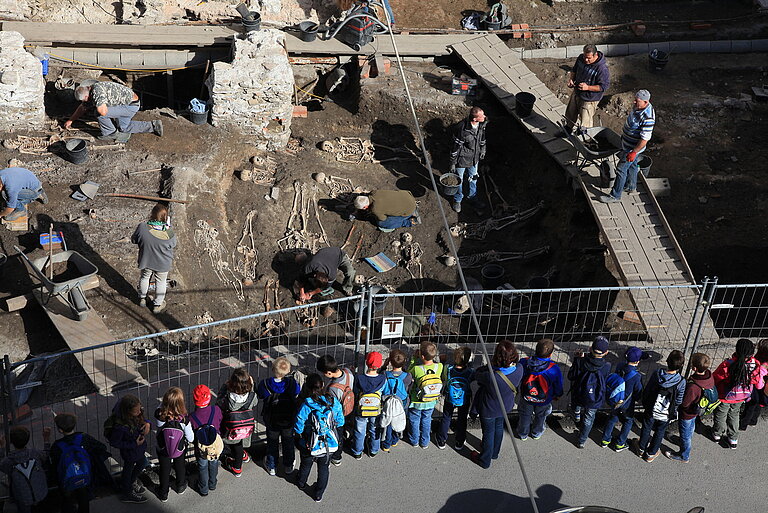The ERC-funded project EPIDEMIC will run from 2025 to 2030. The ambitous aim is to sequence and analyze the genomes of 500 Medieval victims of the Black Death, one of the most devastating infectious disease outbreaks in human history which killed up to half of the European population in the mid 14th century. A team consisting of population geneticists at MPI-EVA led by Harald Ringbauer will study these genomes to break new ground for two major questions:
- Aim 1: Identify genetic risk variants in Black Death victims that determine genetic susceptibility to this fatal disease. The Black Death offers a unique opportunity to understand how infectious diseases drive selective changes in the human genome. The team will utilize that disease variants are enriched in the victims, which will reveal the genetic architecture of susceptibility to this unprecedently lethal epidemic. The resulting insights will be relevant also for future pandemics and for studying general patterns of host-pathogen co-evolution.
- Aim 2: Link these Medieval with modern genomes across Europe to reconstruct the geographical movements of genealogical and genetic lineages. The research team aims to reconstruct a map of European mobility in the recent centuries, which remains largely unknown. A key tool will be finding and analyzing shared long sequences of DNA. Those so-called IBD segments (from Identity by Descent, as they are co-inherited from a recent-coancestor) are the direct genomic traces of biological relatedness. New ways of finding and analyzing IBD segment links between a large sample size of a Medieval population from a single point in time and a large number of present-day people across Europe will result in a human population genetic model of the last centuries with unprecedented detail. Such models are essential for understanding the recent spread of selected genetic variants and for correcting confounding in genome-wide association studies.
To achive these two aims, the research team will generate high-quality genomes of the 500 Black Death Victims, making use of cutting-edge ancient DNA data generation continuously optimized at MPI-EVA aDNA core facility and the high-troughoput of the latest generation of sequencing machines.
Background
In the last decade, researchers have studied the genetic data of more than 10,000 ancient humans, revealing completely new insights into how groups of past people mixed and changed over time. However, understanding recent genetic changes in populations where individuals have constantly moved geographically, such as in Medieval and modern Europe, remains challenging because of methodological limitations and limited access to historical ancient DNA. However, it is crucial to study recent fine-scale human population history to understand why certain diseases are more common in some modern groups than in others and to be able to link changes in specific genes to the exposures that led to those changes.
This critical gap becomes evident in studies focusing on the Black Death - the deadly first wave of the Medieval plague that killed millions in Europe in the 14th century. While there is evidence that the Black Death triggered lasting changes in our immune system genes that are still relevant today, intense disagreement among experts over how to interpret the sparse data prevents a understanding of the plague's impact on the human genome.
The Archaeological site - Domplatz St. Pölten, Austria

The Black Death victims originate from three large mass graves in the city of St. Pölten (Austria). Archeologists excavated those in 2010-2019, when a team led by the city Archaeologist of St. Pölten Ronald Risy unearthed a vast Medieval cemetery at the "Domplatz" containing more than 15,000 bodies. A team led by Prof. Fabian Kanz then analyzed the osteological remains at Medical University of Vienna.
Intially it was a mystery what the more than 500 people in the three mass graves died from. A pilot study at MPI-EVA then conclusively revealed the cause of their death: The infamous Black death that ravaged Europe in ca. 1350. The researchers could reconstruct dozens of the genomes of Y. Pestis, matching exactly the Black Death strain. Generally well preserved, these mostly complete skeletons are now an ideal and globally unique ressource for also studying their human genomes.
Team
Lead
The project EPIDEMIC is funded by an ERC-Starting-Grant 2024 awarded to Harald Ringbauer.
Key collaborators
- Ronald Risy (City Archaeologist St. Pölten)
- Fabian Kanz (Associated Professor, Department of Forensic Medicine, Medical Unversity Vienna)